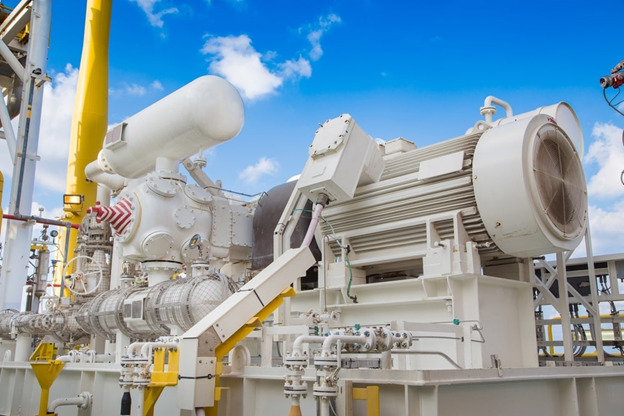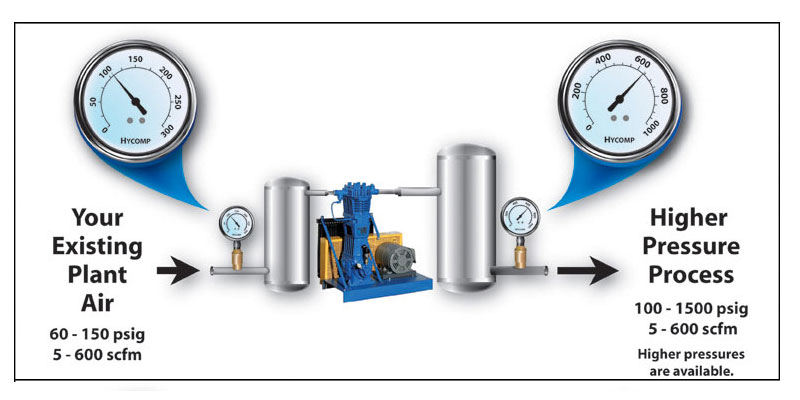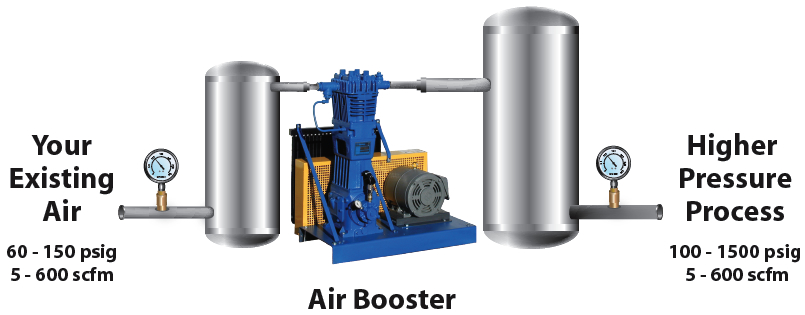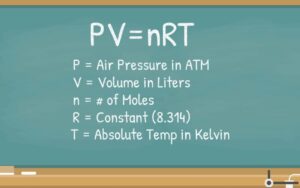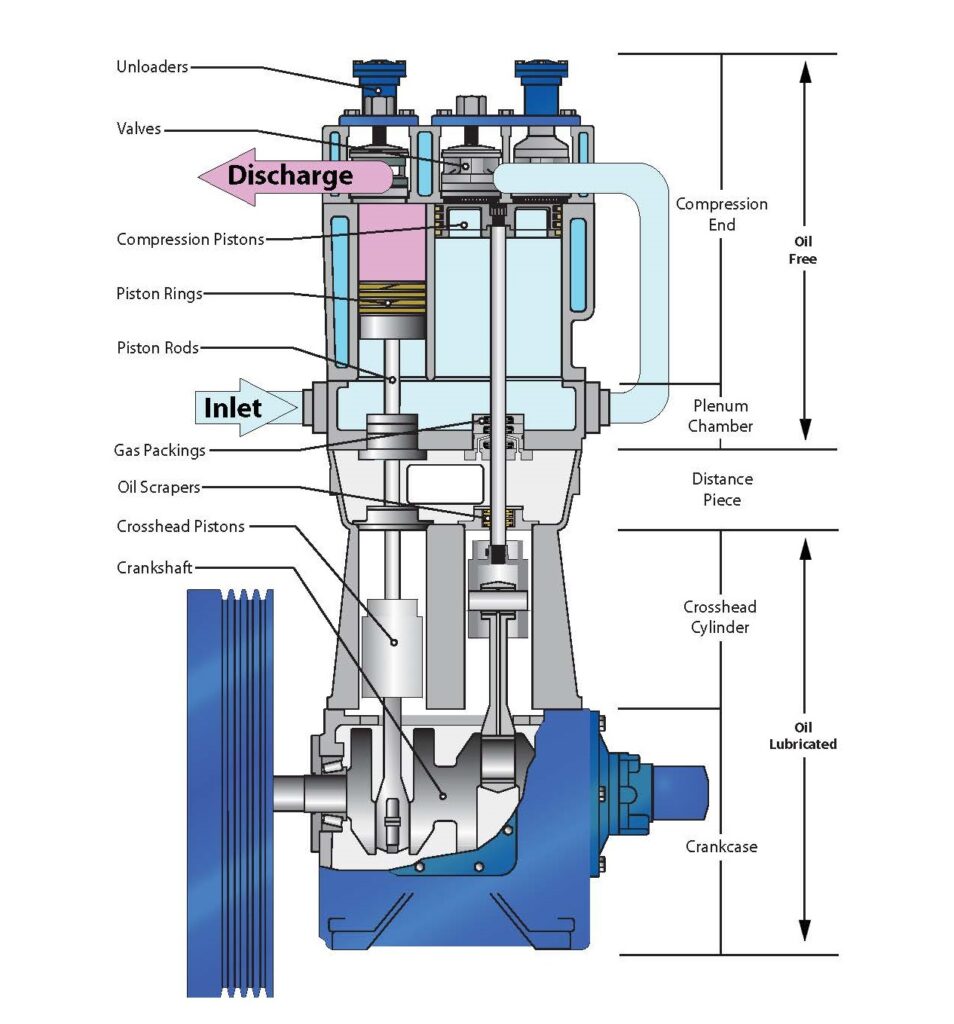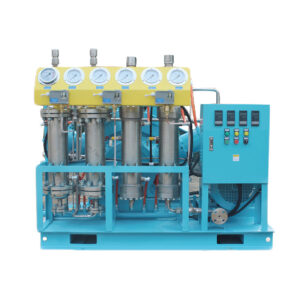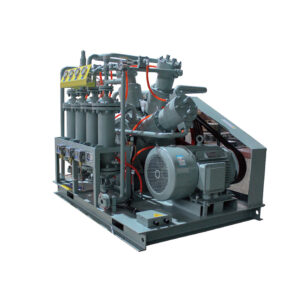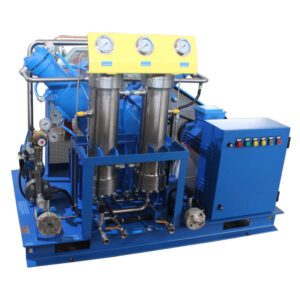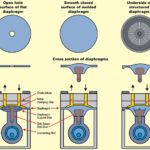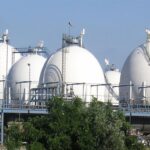1. What is a booster compressor?
Generally, we use common air compressors to meet most of the industrial demands. However, when there’s a requirement for higher pressure than a standard compressor can supply, the booster compressor is needed. When we talk about booster compressors, we actually refer to a different type of compressor which enables us to step up the pressure of the primary feed air compressor.
In another word, the booster compressor is a type of equipment used to increase or amplify the pressure of compressed air coming from the existing air compressor. By using the air booster additionally, the compressed air goes through additional compression stages. Thus, the booster compressor can raise the existing air pressures of 80-150 psig to as much as 2000 psig.
2. How do you increase compressed air pressure?
How to increase the air pressure? In theory, there’re mainly three ways:
To increase the amount of gas: By adding more molecules of a gas, the number of collisions between the air molecules increases and the pressure rises.
To increase the temperature of the gas: By increasing the air temperature, the motion between the gas molecules increases and the pressure rises.
To decrease the volume of the gas: By its very nature, the gas can be compressed and put into a smaller container. This will exert a higher pressure.
Both the air compressor and the booster compressor are used to amplify the pressure of the gas by decreasing its volume.
The booster compressor mainly comprises a receiver tank, pipework, and a discharge tank: the inlet on the receiver tank receives compressed air coming from the air compressor; after that, the gas is channeled through several compression stages for further pressure increasing; finally, this pressurized gas will flow through the pipe into the discharge tank that contains an outlet supplying the gas to the site.
3. What are the main types of Sollant booster compressors?
As a professional boost compressor manufacturer, Sollant produces different types of booster compressors:
Oxygen Booster Compressor: This is a total oil-free air compressor that requires no lubricating oil.
Nitrogen Booster Compressor: This is a nitrogen air compressor widely used in gas separation, etc.; it’s mainly used for chemical engineering or food production, etc.
CO2 Booster Compressor: This CO2 air compressor is also an oil-free air compression system.
If you’re looking for a reliable booster compressor manufacturer, Sollant is your choice. Whether you are looking for an oxygen booster compressor manufacturer, nitrogen booster compressor or CO2 booster compressor, please click: Sollant Oil-free high pressure Oxygen bottle filling system
4. What is the difference between a compressor and a booster?
As we mentioned before, like the standard air compressor, the boost compressor operates on the principle that within a closed system (non-vacuum), the pressure increases as volume decreases.
The air compressors provide pressurized air up to about 150 psi and is the basic step of any air compression system while the booster compressor is a device to amplify and increase the pressure of already compressed air to as high as 2000 psi. Besides, the booster compressor is connected to the existing compression system adding more compression stages for the compressed air that passes through.
In some industrial applications, there’s a higher requirement for the gas pressure. And the boost compressor is a more efficient and cost-effective way than designing an entire compression system for high-pressure comprised air.

